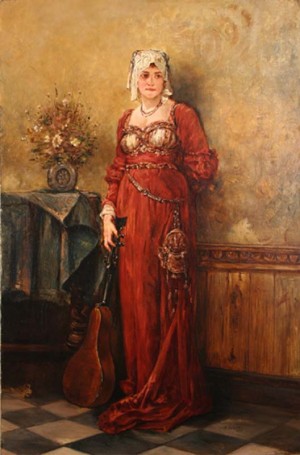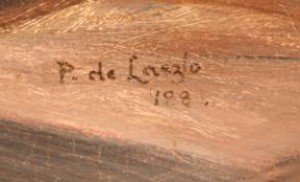De László Forgeries: An Explanation
Such was the artist’s popularity in his lifetime that we are continually finding pictures that are in his style and have acquired his signature or are deliberate fakes. To date there are at least three identifiable hands adding signatures to pictures, in watercolour and oil, in an attempt to pass them off as works by the artist. They are signed with variations of the signature P. / Philip / de Laszlo or Laub and have dates added ranging from the late 1870s to the 1880s. The artist himself was frustrated by these deceptions, on one occasion complaining in his diary that he had been obliged yet again to go a saleroom to dismiss a work that had been attributed to him.
From the provenance of one a pair of children’s portraits it is known that at least one forger was working in the artist’s lifetime. They were purchased, and later sold, by Joseph Duveen, eldest son of the art dealer and benefactor Sir Joseph Duveen (1843-1908). It is interesting to note that even the son of such a doyen of the art world was convinced by the pictures.
Another group thought to be by the same hand as the children’s portraits are a series of gypsy women and female sitters in mediaeval dress, some with musical instruments. These are painted in a highly finished style and dated to the 1880s, one to 1879 when the artist was only 10!
-
Owens Art Gallery, Mount Allison University, Gift of Lord Beaverbrook

Owens Art Gallery, Mount Allison University, Gift of Lord Beaverbrook
-
Detail of one of the forgers' signatures

Detail of one of the forgers' signatures
We are grateful to Jane Tisdale, Fine Arts Conservator at the Owens Art Gallery, Mount Allison University, Sackville, NB, Canada, for allowing us to illustrate the forgery in their collection as an example.
